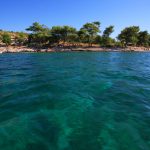The Hvar Meteorology Evening marking the anniversary took place in the beginning of February, organised by the Hvar Town Library and State Meteorological and Hydrological Service
Hvar local, meteorologist Marko Vučetić held a lecture on the history of Hvar meteorology. Among the many selected interesting points, there was talk of world renowned biologist and meteorologist Grgur Bučić, founder of the Hvar station.
On March 1 of 1858 he began recording meteorological observations in Hvar, as part of the Austrian network of meteorological stations.
It was also pointed out that based on Bučić’s data, global climatologist Julius von Hann published in 1884 the Klima von Lesina (climate of Hvar town), the first ever climate of a Croatian town or area ever!
In the 160 years of the station existence there were many interesting events noted by observers, from polar lights to storms, falling meteors, earthquakes, vineyards destroyed by hail, sunken ships and even disease epidemics, rated valuable information by the observers and noted in the log.
The station ceased observations during the Second World War, but afterwards returned as a phoenix. Although out of function in certain periods, it was stated that meteorological record were kept in Hvar and that the search of archives would turn up some data to fill in the voids.
The station was part of the Franciscan monastery since 1926, and the observer was Pavao Miličić from Brusje, or as locals called him, father Pavo, who performed this duty until 1948. There are many peculiarities from this period, not only of meteorological events, but also way of life and notions of natural occurrences by the locals at the time.
There is a wonderful description of polar lights on the night of January 25-26 of 1938, left by father Pavo: “This morning they spoke of a large forest catching fire someplace, others of a factory burning, some foreseeing a heavenly sign of a looming bloody war.” It is also interesting the station in the monastery had a large number of registration instruments, such as a heliograph.
Unfortunately, data from those measurements have not been found yet. The station was later moved to the backyard of a nearby building, and in 1950 returned to the place where Grgur Bučić began his observations in Veneranda, today known as the Hvar summer stage.
This was an opportunity to announce other events in Hvar marking 150 years of modern tourism in Hvar (the Hygienic Society was formed in 1868), preceded by meteorological observations as a foundation for tourism.
Translated from DHMZ.











